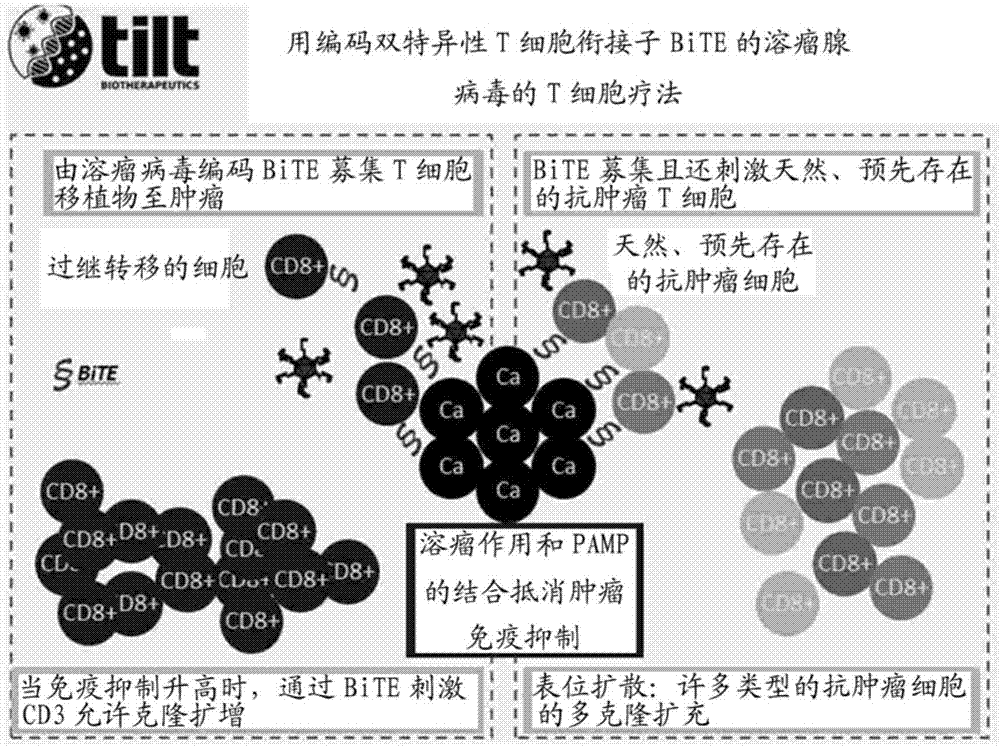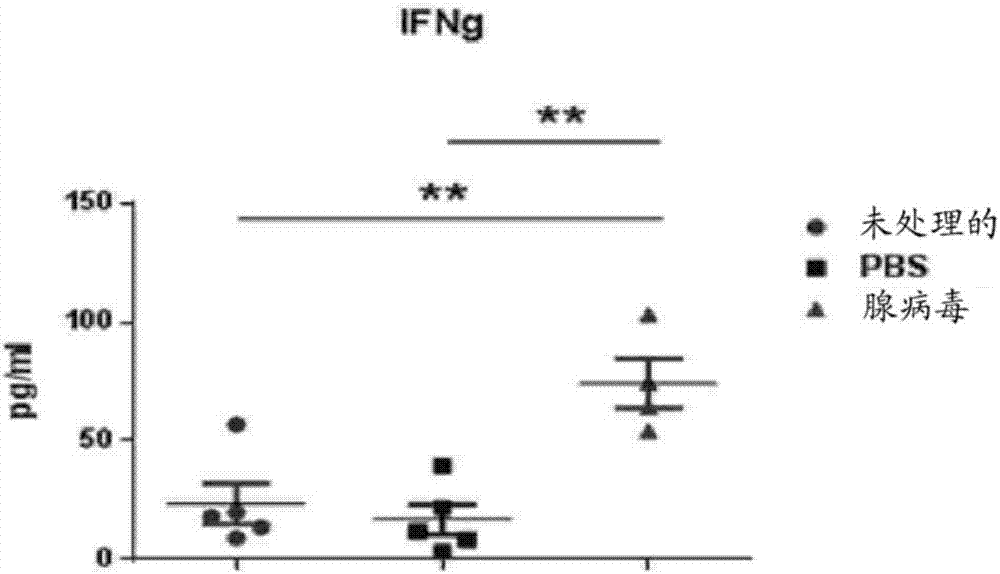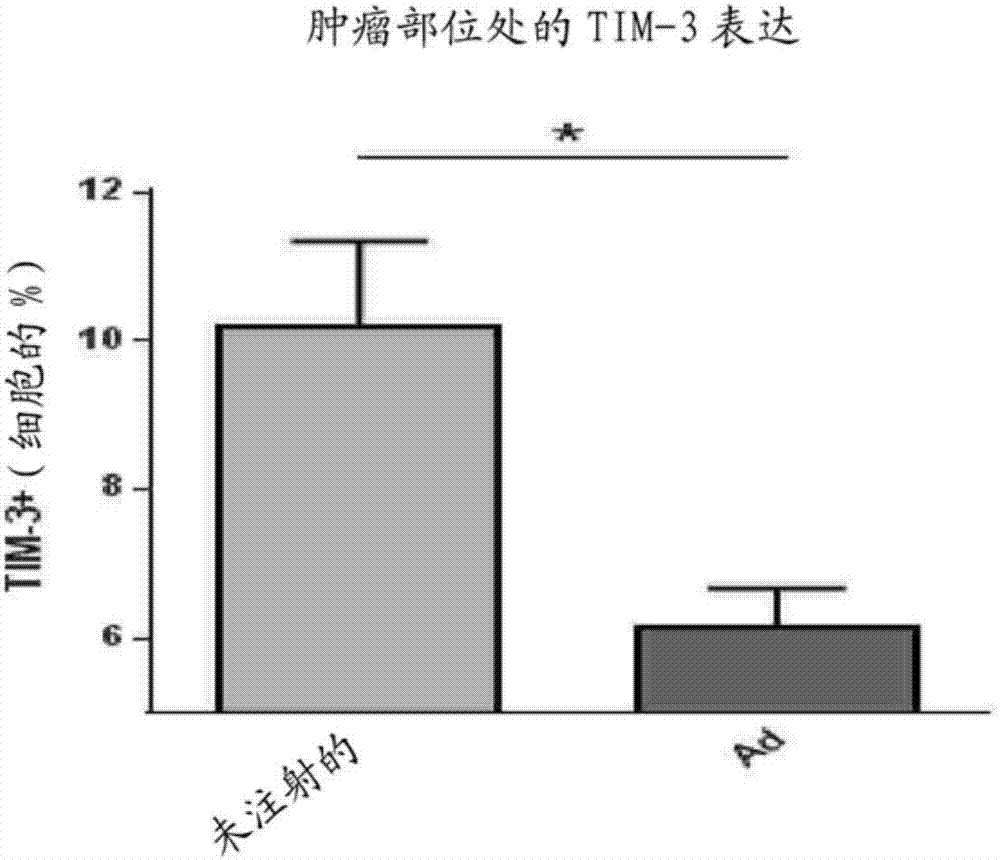Oncolytic adenoviruses coding for bi-specific antibodies and methods and uses related thereto
An oncolytic adenovirus, bispecific technology, applied in the field of human cancer treatment, oncolytic adenovirus vector, can solve the problems of unpredictable cancer therapy, inefficiency, unsafety, etc., to reduce tumor immunosuppression and enhance treatment effect, effect of preventing adverse events
- Summary
- Abstract
- Description
- Claims
- Application Information
AI Technical Summary
Problems solved by technology
Method used
Image
Examples
Embodiment
[0130] Materials and Methods
[0131] B16-OVA animal model: B16 cells expressing ovalbumin (B16-OVA) were maintained in RPMI, 10% FBS, 5 mg / ml G418, 20 mM L-glutamine, 1×Pen / Strep solution (GIBCO). C57BL / 6 immunocompetent female mice aged 4-7 weeks were subcutaneously implanted with 2.5×10 in 50 μl RPMI, 0% FBS on the right side 5 B16-OVA cells, one tumor per mouse. Approximately ten days after tumor implantation (approximately 3 mm minimum diameter when tumors became injectable), mice were grouped and treated with 50 μl PBS or 1 × 10 in 50 μl PBS for six consecutive days in some experiments. 9 Intratumoral injection of viral particles (VP) of an oncolytic adenovirus was performed. In other experiments, three injections were performed on days 0, 2 and 4. Since murine cells do not tolerate human adenovirus, multiple intratumoral virus injections were used to mimic viral replication-induced inflammation (Blair et al., 1989).
[0132] Adoptive transfer: On the first day of ...
PUM
 Login to View More
Login to View More Abstract
Description
Claims
Application Information
 Login to View More
Login to View More - R&D
- Intellectual Property
- Life Sciences
- Materials
- Tech Scout
- Unparalleled Data Quality
- Higher Quality Content
- 60% Fewer Hallucinations
Browse by: Latest US Patents, China's latest patents, Technical Efficacy Thesaurus, Application Domain, Technology Topic, Popular Technical Reports.
© 2025 PatSnap. All rights reserved.Legal|Privacy policy|Modern Slavery Act Transparency Statement|Sitemap|About US| Contact US: help@patsnap.com



